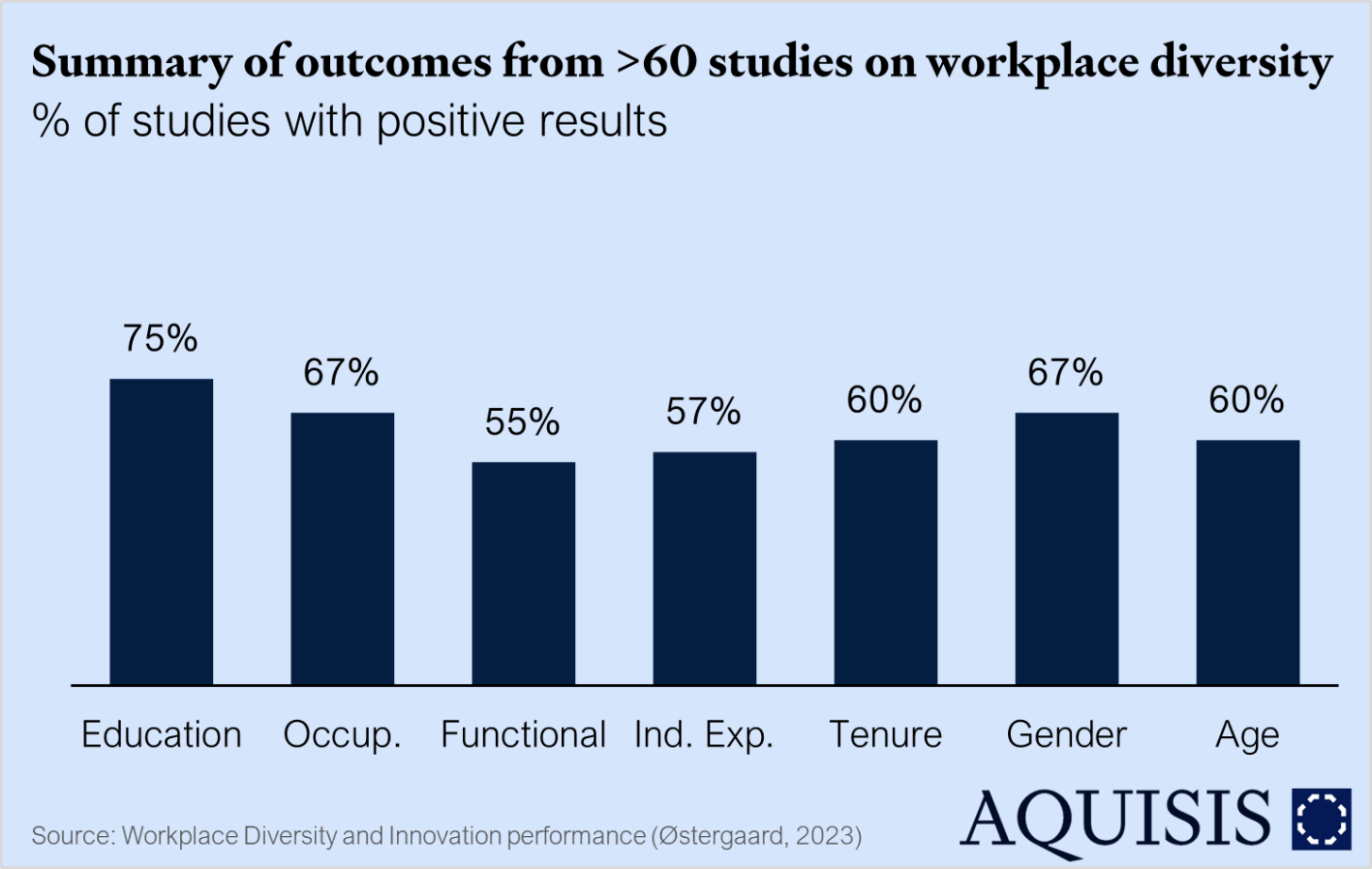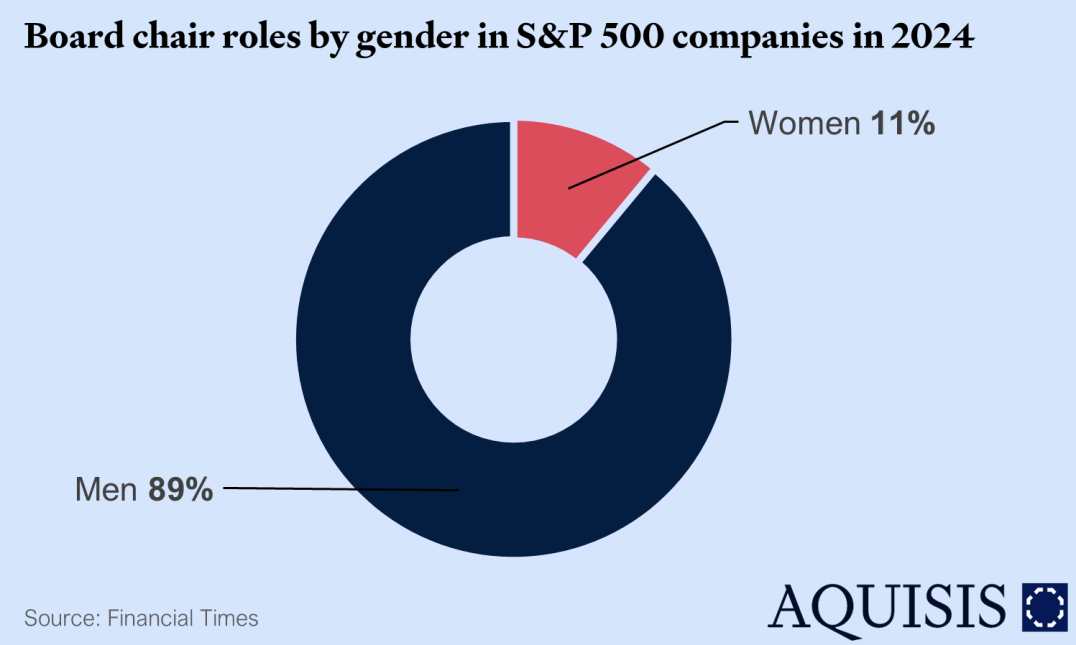
Interest in workplace diversity has grown significantly over the past decade, particularly regarding its role in driving innovation. Businesses increasingly recognize that diverse teams integrate a range of perspectives, fostering creativity and enhancing problem-solving capabilities. However, the impact of diversity is not uniform, it depends on company culture, management strategies, and organizational goals. This complexity gives rise to both opportunities and challenges.
One widely accepted view is that diversity enhances innovation by combining unique resources, knowledge, and viewpoints, providing firms with a competitive advantage. A workforce composed of individuals from different backgrounds strengthens an organization's ability to identify emerging opportunities, adapt to changing environments, and drive transformation. Leaders with diverse experiences are better equipped to explore alternative strategies, improving decision-making and reducing cognitive biases. Additionally, diversity broadens an organization's knowledge network, both internally and externally, facilitating the generation of breakthrough ideas (Christian R. Østergaard, 2023).
However, diversity can also introduce challenges. Humans naturally categorize themselves into social groups, often favouring those with whom they share similarities while perceiving outsiders with scepticism. This tendency can lead to conflict, communication barriers, and reduced collaboration. On the other hand, similarity fosters cohesion and ease of interaction but may also reinforce groupthink, limiting innovative thinking. The key to leveraging diversity lies in effective management, by fostering an inclusive culture where all voices are heard, organizations can mitigate potential downsides while maximizing the benefits of diverse perspectives.

Research on workplace diversity often focuses on team composition, analysing the impact of various forms of diversity, such as functional, occupational, experiential, and educational, on innovation. Functional and occupational diversity enhance problem-solving by integrating different skill sets and competencies. However, trust among team members is essential for these benefits to materialize. Beyond roles, diversity in experience, such as differences in tenure within a company or industry background, also plays a role. While tenure differences can sometimes hinder communication, they may simultaneously introduce fresh perspectives that drive innovation. Likewise, diversity in industry experience is often associated with improved adaptability and knowledge expansion, leading to stronger innovation performance. Educational diversity further contributes by introducing varied problem-solving approaches and broadening an organization’s intellectual resources. However, its impact depends on achieving the right balance, too much divergence may lead to inefficiencies rather than innovation.
Ultimately, the effects of diversity on innovation are complex and context-dependent. The key determinant of success is how well diversity is managed, organizations that effectively integrate diverse perspectives into their culture and decision-making processes are more likely to translate these differences into meaningful innovation.

Workplace diversity impact on leadership representation remains uneven across industries. While many companies have made strides in increasing diversity on boards, true representation in leadership positions continues to lag behind. For instance, non-white representation on S&P 500 boards grew from 20% in 2020 to 26% in 2023, but this growth has since plateaued. More concerning is the fact that non-white executives hold just 13% of lead director roles and 12% of board chair positions, an area where representation has actually declined in some instances. Similarly, although women now account for 34% of board directors, only 11% occupy board chair roles (Mundy, 2023). In our experience, representation is considerably lower in privately held EU companies, and the figures for S&P 500 companies may present an optimistic perspective.
Critics argue that some companies prioritize diversity for optics rather than genuine influence. Others suggest that leadership turnover simply takes time. Regardless of the reasons, achieving true equity remains a long-term challenge. Current trends indicate that gender parity on board seats could be reached by 2038, but achieving parity for CEO roles may not occur until 2100. In the meantime, political and economic shifts are adding new layers of complexity to these efforts. The rise of global protectionism, alongside strategies such as the Trump administration’s “America First” policy and the EU’s “Europe First” approach championed by policymakers like Stéphane Séjourné, coupled with the broader surge in far-right support, is reshaping global business dynamics. As organizations navigate these changes, it will be increasingly important to ensure that diversity leads to meaningful leadership representation, which will be crucial for fostering long-term innovation and resilience.
So, does board diversity stabilize or destabilize firm performance? On the one hand, a homogeneous board may risk unchecked decision-making, leading to extreme choices that can increase overall risk. On the other hand, greater diversity could slow decision-making and generate conflicts, making outcomes less predictable. The evidence suggests that board diversity significantly reduces firm risk by promoting more balanced decision-making and discouraging extreme or unchallenged choices. On average, when board diversity increases, companies tend to lower their financial leverage and increase dividend returns to shareholders. Specifically, financial leverage decreases by 0.6 to 1.2 standard deviations, while dividend returns go up by 1.1 standard deviations. Additionally, volatility in returns are reduced by 24%-points . This positive effect is not driven by any single dimension of diversity, but rather by the collective influence of multiple factors (Gennaro Bernile, 2018).
However, the impact of diversity is not uniform; its effectiveness depends on the context. Diverse boards are particularly beneficial in high-growth, R&D-intensive firms, where diverse perspectives enhance decision-making and innovation. A one standard deviation increase in board diversity raises R&D spending by 0.9 standard deviations. It also improves patent quality, with a 2.8 standard deviation increase in the number of patents and a 1.7 standard deviation increase in patents per million dollars of R&D spending. Conversely, the benefits of diversity may diminish in volatile markets that require rapid decision-making or when long-tenured or co-opted directors reduce a board’s independence.
The evidence strongly suggests a causal relationship: companies with access to a more diverse talent pool consistently reap these benefits. Ultimately, diversity strengthens internal governance, striking a balance between risk-taking and long-term stability.

Diversity can emerge organically through intentional hiring practices aimed at improving representation across various demographic dimensions. However, it can also be a natural side effect of cross-border mergers and acquisitions. As firms from emerging markets acquire companies in developed economies, they often adopt the governance standards of their targets, which can include enhancing board diversity.
By 2018, outward foreign direct investment from emerging markets accounted for over half of the global total, with cross-border M&As emerging as a primary strategy for market entry, asset acquisition, and technology transfer. Beyond their financial benefits, M&As also have profound effects on corporate governance. When companies from emerging markets acquire firms in developed economies, they often adopt more advanced governance practices, such as improved board diversity. Research indicates that acquiring firms increase female representation on their boards in response to the gender equality standards of the target country. For example, investing in a country with median gender equality boosts the acquirer’s female board representation by 1.5%, a 12.5% increase compared to the sample mean (Yangming Bao, 2024).
Turning cultural diversity into a competitive edge in M&A
However, the cultural differences between acquirer and target companies can present significant challenges. Without proper integration efforts, clashes between employees, leadership, and shareholders can hinder performance and reduce stock returns. Nonetheless, when firms anticipate these challenges and proactively manage them, M&As across culturally distant regions can unlock greater synergies and long-term benefits, creating value beyond mere financial transactions. This trend ties into broader discussions about leadership diversity. While many companies are increasing board diversity, true representation in leadership roles remains limited. As globalization and corporate governance continue to evolve, ensuring that diversity translates into meaningful decision-making power will be crucial for sustaining innovation and maintaining a competitive edge.
Cultural differences are often blamed for the failure of M&As, yet they can also drive success. Cross-border acquisitions provide firms with faster market entry and access to valuable resources, but post-merger performance often suffers due to cultural clashes. Despite this, cultural distance does not always constitute a disadvantage (Rajesh Chakrabarti, 2009). In fact, national cultural differences can foster unique synergies that enhance innovation and improve long-term performance when managed properly. Acquiring firms aware of these cultural challenges tend to be more selective, opting for deals with stronger economic potential. This deliberate approach, combined with the diverse strengths of the merged organizations, can result in better post-merger outcomes.
Interestingly, mergers between culturally distant firms often outperform those between companies from similar cultural backgrounds. This may be because managers involved in cross-border deals tend to be more sensitive to cultural issues and actively work to bridge these differences. Additionally, cultural diversity can introduce new perspectives that challenge rigid structures and promote more effective adaptation to changing environments. However, it is important to distinguish between national and corporate culture. While national culture influences corporate culture, disparities at the company level can introduce additional integration challenges. Some of the most difficult mergers have occurred between firms from the same country but with conflicting corporate cultures.
In conclusion, diversity…
• drives innovation by bringing together diverse perspectives, skills, and backgrounds that enhance creativity and problem-solving capabilities.
• may lead to adverse effects if not managed well, including potential conflict, communication barriers, and reduced collaboration. However, these can be mitigated with effective management and an inclusive culture.
• in terms of leadership representation is still more of a goal than reality with progress in diversity on boards, but slow representation in top leadership roles. Achieving gender and racial parity in leadership may take decades.
• in the board of directors impacts firm performance positively, reducing risk and promoting more balanced decision-making. It strengthens governance, particularly in high-growth and R&D-intensive firms.
• can be boosted by cross-border M&As, especially with firms from emerging markets adopting better diversity standards. However, cultural differences can present challenges that need proactive management for successful integration.
• Enhances firm performance in mergers between culturally distant firms compared to those with similar backgrounds
Associate
Managing Partner
Christian R. Østergaard, B. T. (2023). Workplace diversity and innovation performance: current state of affiars and future directions. arXiv, 28.
Gennaro Bernile, V. B. (2018). Board diversity, firm risk, and corporate policies. Journal of Financial Economics.
Mundy, S. (2023, December 2). US boardrooms: still a white man’s world? Financial Times.
Rajesh Chakrabarti, S. G.-M. (2009). Mars-Venus marriages: Culture and cross-border M&A. journal of International Business Studies.
Yangming Bao, J. L. (2024). Cross-border M&A, Gender-equal Culture, and Board Gender Diversity. Journal of Corporate Finance.
No Code Website Builder